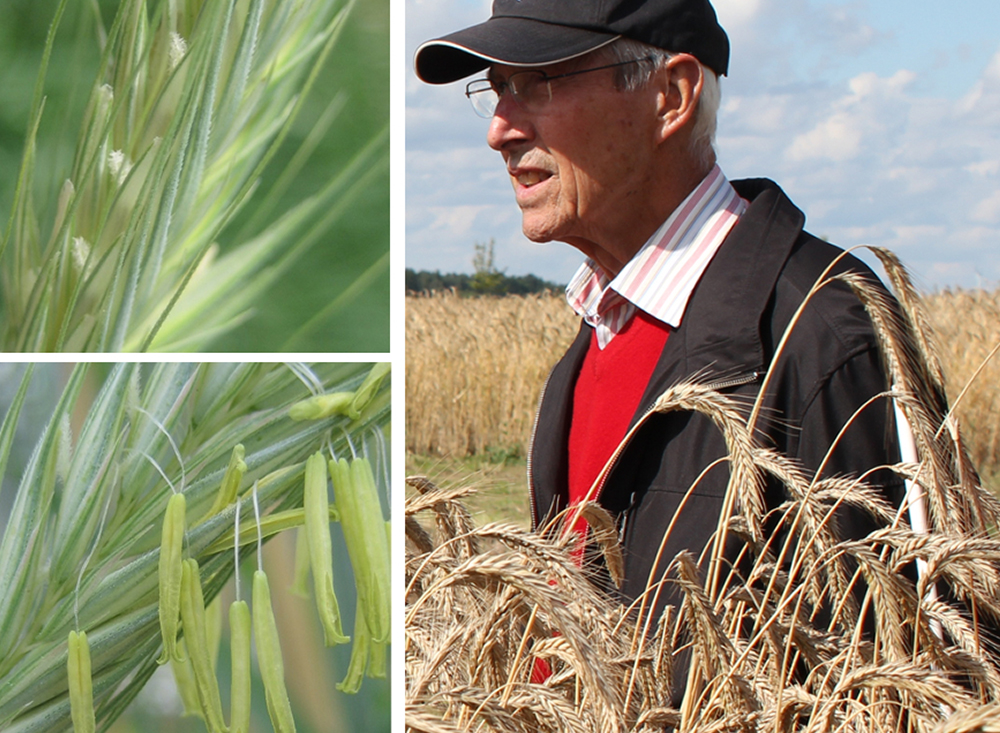
The ever changing demands of farmers, consumers and the environment asks for an innovative strategy of selective mating to improve the performance of rye in a much shorter time as compared to natural selection and to produce phenotypes expressing traits beyond fitness to the environment in which rye is cultivated.
The supporting pillar and game changing observation enabling selective matings in rye has been reported by the German scientists Hartwig H. Geiger and Wolfgang Schnell about 50 years ago at the University of Hohenheim. They observed and analyzed plants from an Argentinian 'Pampa' rye, that failed to produce functional anthers, pollen, or male gametes. This so-called cytoplasmic male sterility (CMS) is the result of specific interactions between nuclear and mitochondrial genes and creates an evolutionary advantage: empirical evidence has been reported that male sterile genotypes produced more flowers, set more fruits and produced more seeds that were larger and germinated better than those of hermaphrodites from the same populations. Indeed, CMS has statistically positive effects on grain yield and thousand grain weight in rye as well.
In progenies from such selective matings the CMS effect of the seed parent genotype can be counteracted by nuclear alleles from the pollen parent, that restore pollen production and, thus, are designated restorer-of-fertility (Rf) genes.
